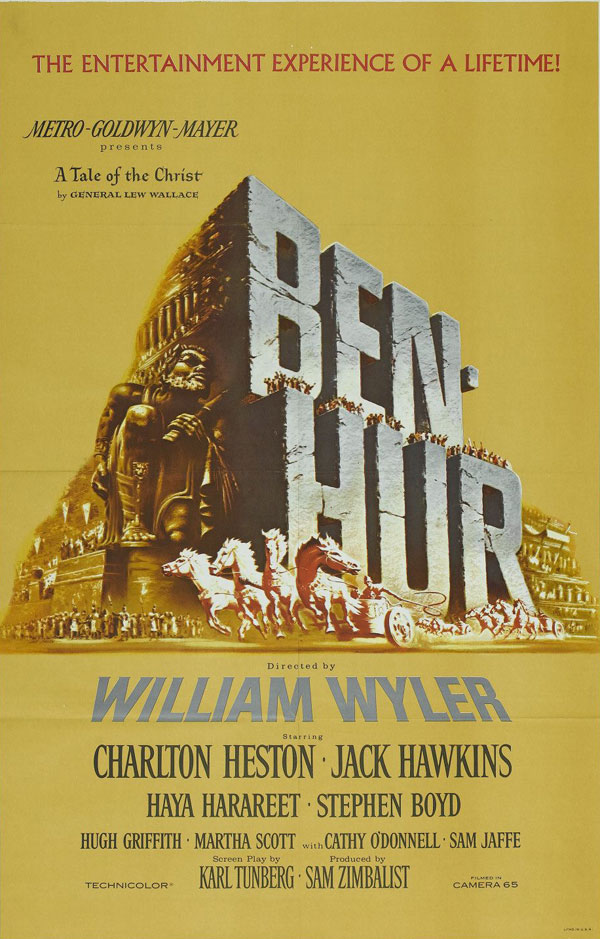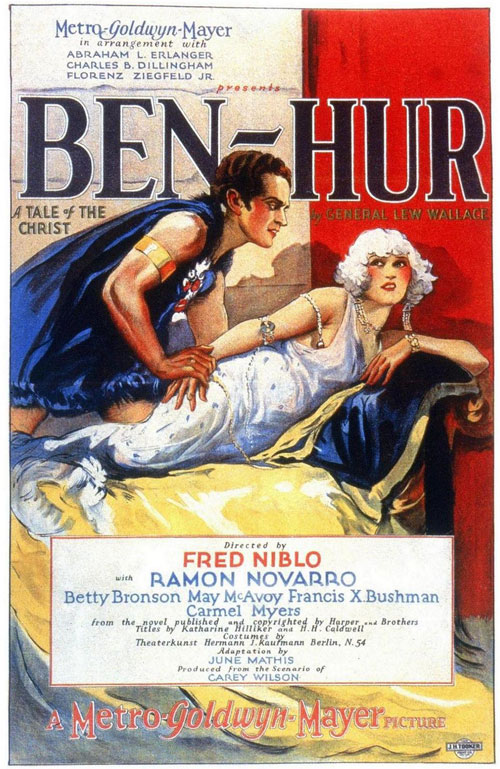Remaking Ben-Hur
Today, remaking Ben-Hur. The Honors College at the University of Houston presents this program about the machines that make our civilization run, and the people whose ingenuity created them.
A few years ago, a Canadian production company did a remake of Ben-Hur. It was a 4-hour miniseries for television. But why remake it? Didn't William Wyler's epic 1959 film tell the story well enough? That film starred Charlton Heston in his prime. He played the passionate Judah Ben-Hur, a Jewish hero caught up in a thrilling tale of revenge and redemption in Roman times. The film dominated the Academy Awards, winning 11 Oscars, including Best Picture.
The Wyler film had spectacular effects: a great sea battle with men in loincloths, and a thrilling chariot race, the climactic moment of Judah's revenge over his rival, Messala. So was the television remake just trying to piggyback on the Wyler film's success?
The truth is Wyler's film was itself a remake, done at a time when the movies were at war with television. The great film epics of the late 50s and 60s were deliberately oversized and spectacular to draw audiences away from their black and white boxes. Orgies of color, enormous new aspect ratios, star-studded casts and thrilling plots were marshaled to fight back against television's drain on the box office. Wyler's film has all that, but it also recycled a thrilling story to guarantee success.
You see, the first great Ben-Hur was a classic silent film that appeared in 1925. It was an ambitious project by the newly merged Metro-Goldwyn-Mayer Studios. It had, well, an epic sea battle and an awesome chariot race, where the cinematography stunned the audience. Chariots literally seem to run right over the camera. The young Wyler had served as an assistant director on those scenes. The film starred matinee idol Francis Bushman as the wicked Messala, while Mexican actor Ramon Navarro played Judah. Navarro was next great Latin lover after Rudolph Valentino. It was the most expensive film of the silent era and it helped establish MGM as a major force in the industry.
But not even this was the first film. There was a 1907 version before that, just fifteen minutes featuring the great race. Actually, it's a bunch of horses from a local fire department hitched to chariots. And they're just racing along a beach in New Jersey. But it featured William S. Hart, the star of the original Ben-Hur production ... on Broadway.
Yes, before Ben-Hur ever became a film, it had triumphed in New York as a spectacular stage production, featuring: a chariot race. Real chariots with teams of horses ran on treadmills, heading full tilt at the audience. They were cabled from behind to prevent them from flying off, and a cyclorama backdrop whipped along, giving the impression of tremendous speed.
Who on earth thought that up? Why, the powerful Broadway production team of Erlanger and Klaw, who saw great potential in the story to make an awesome stage spectacular. But where did they get the story? Well, from the blockbuster novel Ben Hur: A Tale of the Christ, by Lew Wallace. Wallace's 1880 tale was the best selling novel in America until Gone with the Wind. And here our story of runaway success at last finds its true origin. Unless of course, you think Wallace was riding on the success of another bestseller: The Bible.
I'm Richard Armstrong, at the University of Houston, where we're interested in the way inventive minds work.
Sources:
Pomeroy, Arthur. And Then It Was Destroyed By the Volcano: The Ancient World in Film and on Television. London: Duckworth, 2008.
Soloman, Jon. The Ancient World in the Cinema. Revised and expanded edition. New Haven: Yale UP, 2001.
Wyke, Maria. Projecting the Past: Ancient Rome, Cinema, and History. New York: Routledge, 1997.
Images: All the posters are from the Wikipedia Creative Commons.


